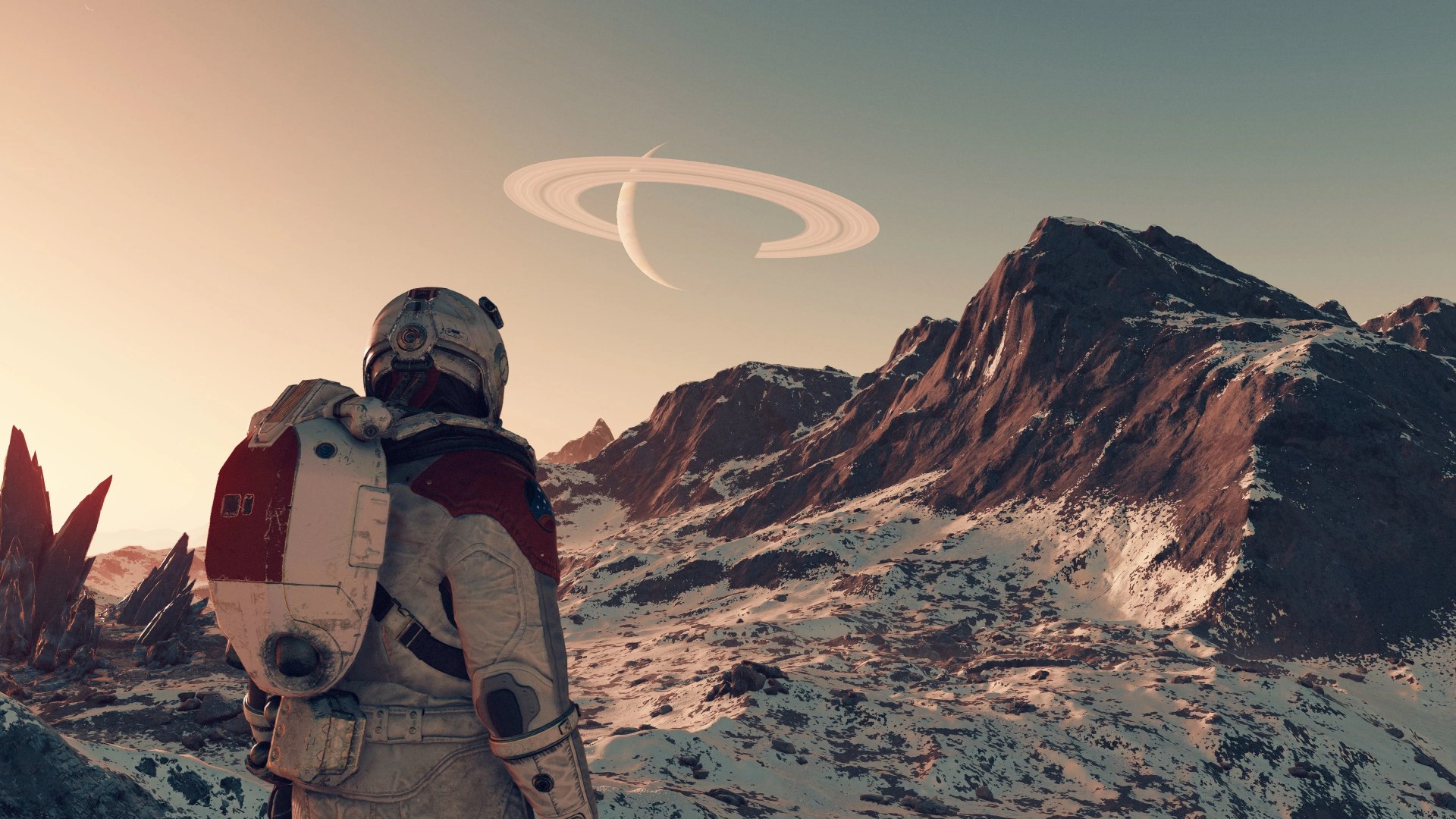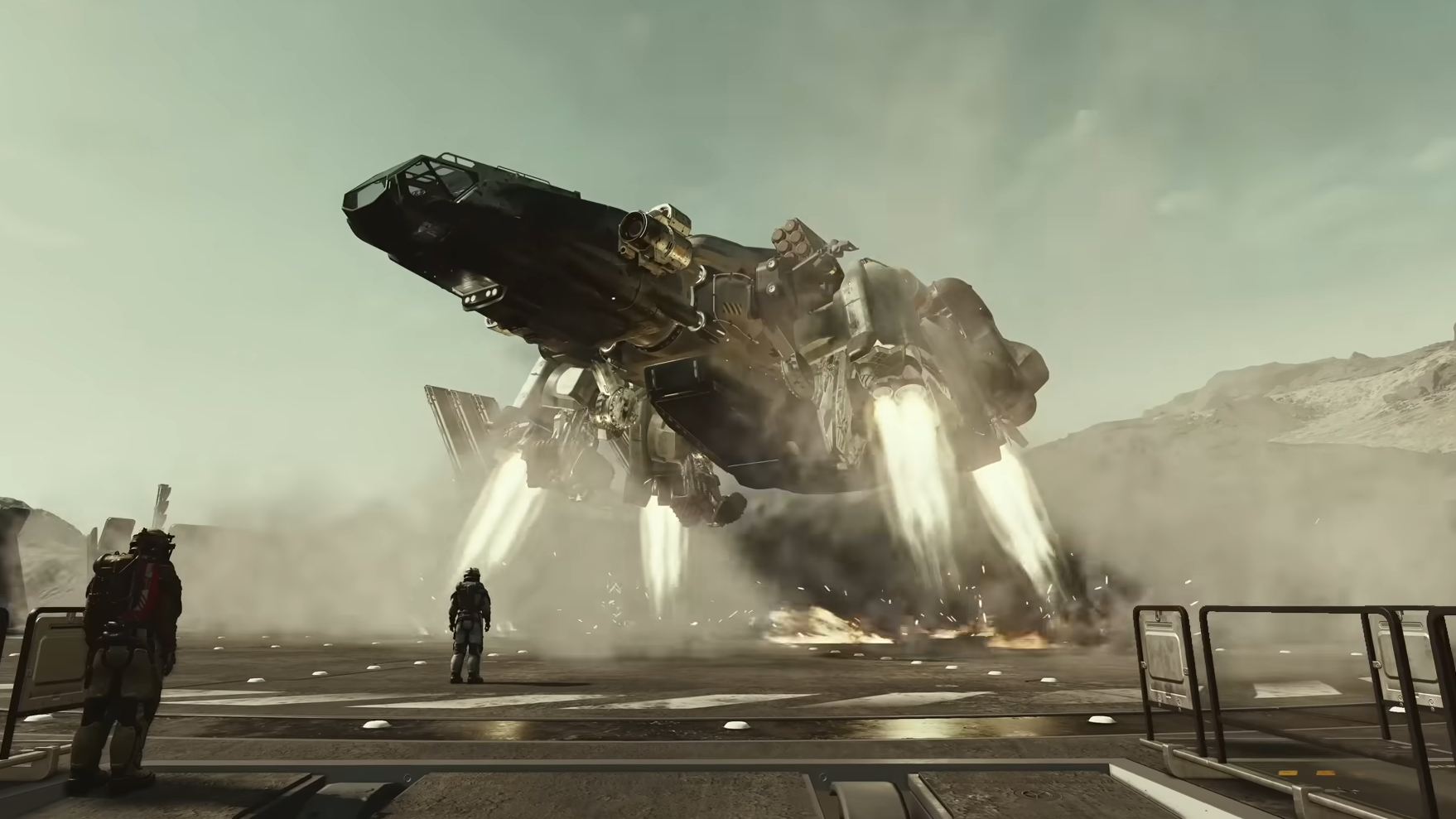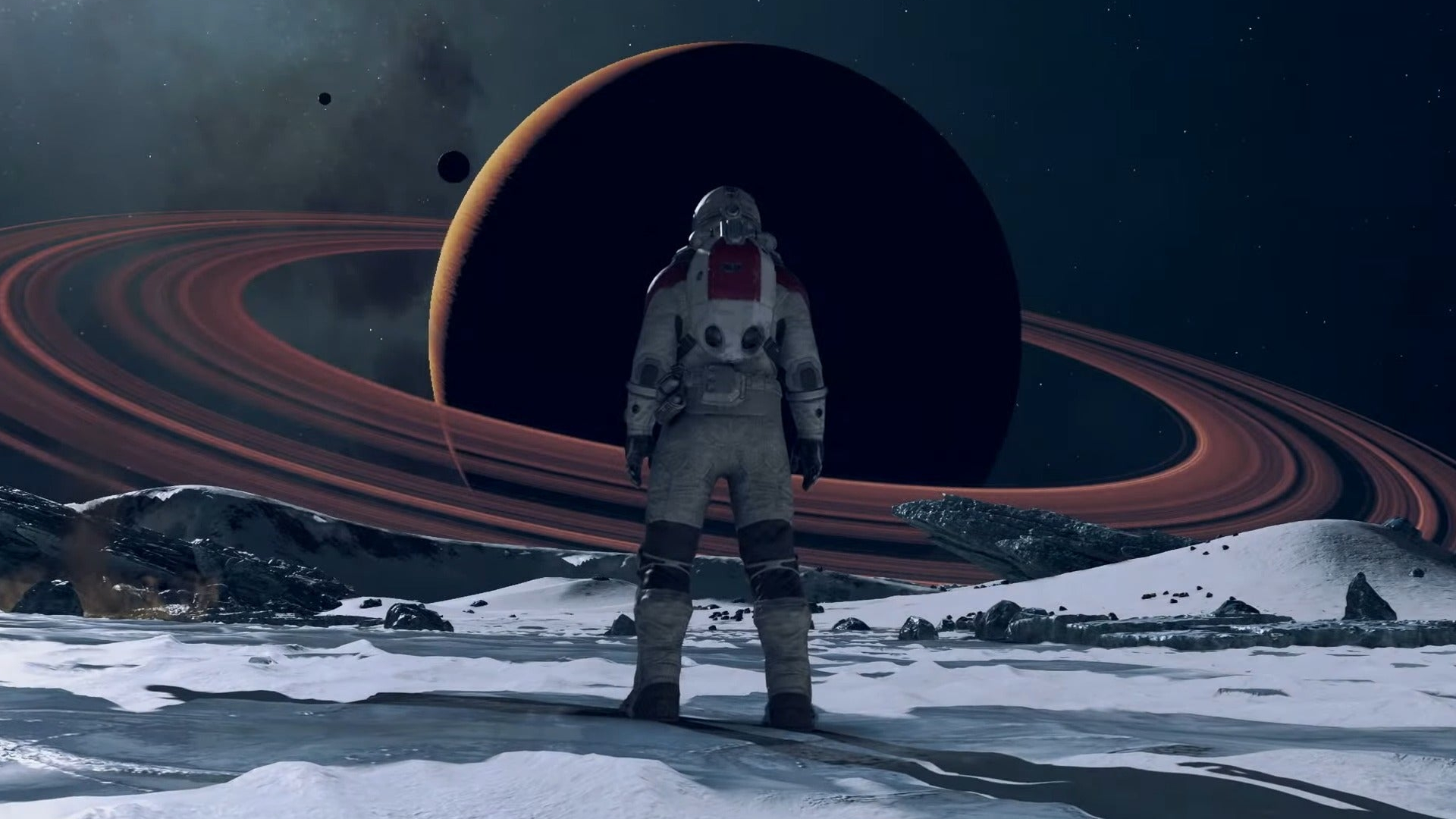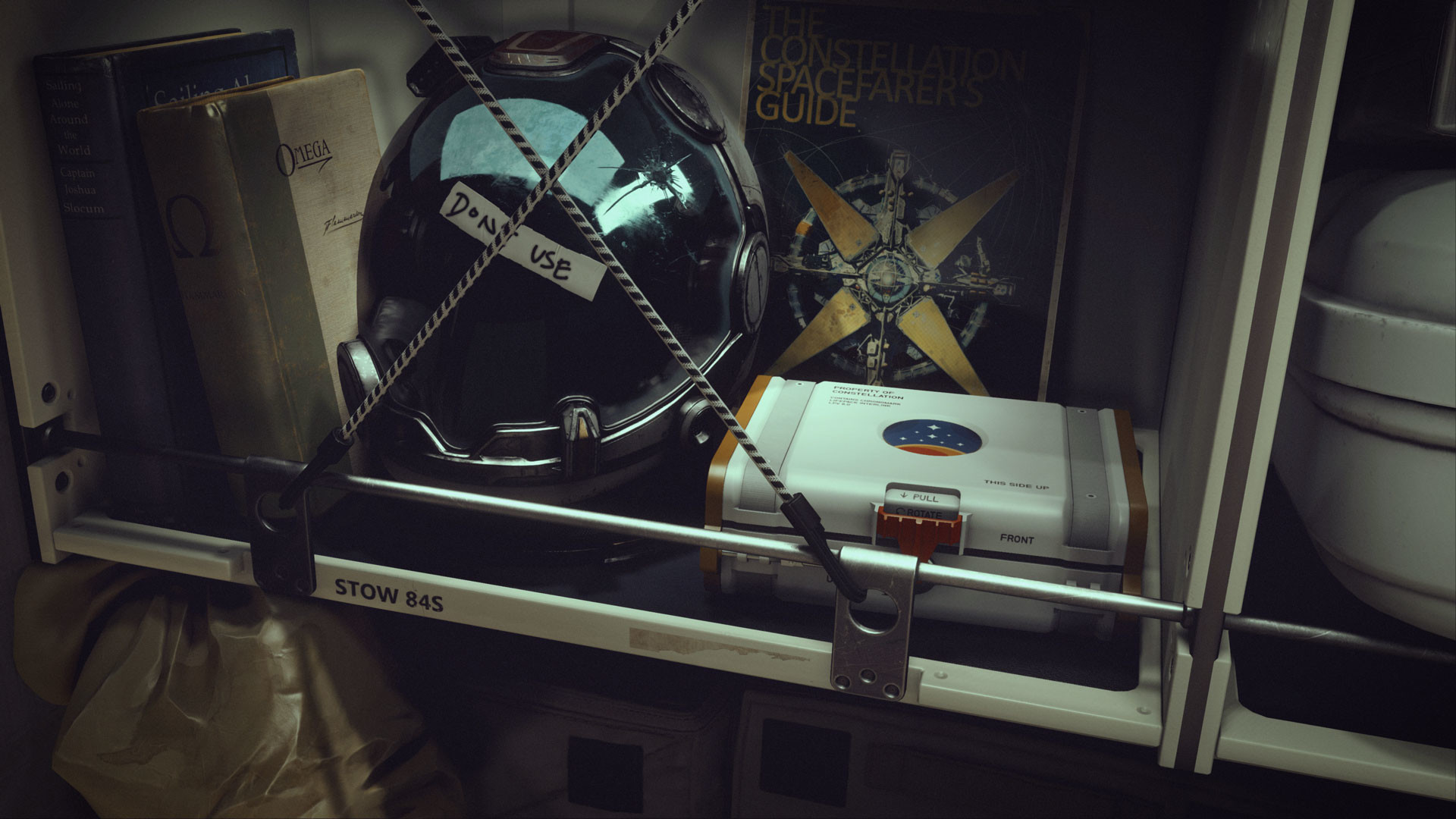Starfield needs to accept it's better space opera than hard sci-fi
Suspending your disbelief

It’s curious that Bethesda has chosen such a NASA-inspired aesthetic for Starfield, one of the most anticipated upcoming games of the year. Traditionally, Bethesda games have directed the imaginations of their players towards less grounded themes, with the high fantasy of The Elder Scrolls and the pulpy wackiness of post-apocalyptic Fallout encouraging all sorts of flights of fancy.
Starfield, however, seeks to appear more rooted in our own reality than Bethesda’s previous offerings - at least judging by the preview material. By simply using the phrase “NASA-punk” to describe the game’s appearance in the Starfield Direct back in June, Bethesda harkens to a kind of realism not usually seen in its games, hinting at a move towards ‘hard sci-fi’. Though the extent to which Starfield could be considered “punk” is debatable, there’s no doubt that the game’s look and feel are meant to conjure the futuristic aspirations of the 60s and 70s. Known as cassette futurism, this sci-fi aesthetic prizes tactile, analog consoles, practical, sturdy shapes, and, almost always, a sense of grounded realism.
For those not in the know, the term hard sci-fi refers to a subgenre of science fiction where, despite the existence of futuristic technology, the machinery and capabilities of scientific advancements are grounded in the same logic and rules in the reality of our present-day. Hard sci-fi is all about cryo-pods, the difficulties of faster-than-light travel, and, more often than not, how fragile human beings can be when you pluck them from the comforts of Earth and put them in the cold dark of space.
Starfield's look and feel are meant to conjure the futuristic aspirations of the 60s and 70s
The question has been raised before, too. In a video released by Bethesda back in October last year, game director Todd Howard made it clear that, in terms of sci-fi, Starfield is “more hard to us.” However, he also made it clear that there were limits to how far they wanted to go, concluding that he didn’t want players to “die in space cold.” In practice, this means that Starfield has a fine line to walk between delivering player agency, while also delivering on its promise of a futuristic, yet grounded setting.
We have a problem

This tension is partly why fans were so baffled at recent revelations surrounding Starfield’s economy. The notion that a spaceship could be worth the equivalent of 54 sandwiches doesn’t square easily with the hard sci-fi trappings of Starfield’s preview and trailers. To offer the NASA-adjacent experience advertised in previews and trailers, Starfield will need to serve up an experience that is, at least, slightly simulationist in its approach. Space will need to feel like a vast, dangerous logistical nightmare, just as the machines that brave it will need to feel robust, technical, and consistent in their design.
It’s no coincidence that the most memorable hard sci-fi games also tend to be some of the best horror games. Alien: Isolation and, to an extent, Prey (the 2017 game) both present consistent sci-fi worlds that run on a consistent internal logic. However, in doing so, both end up using fear of the unknown to emphasize the frailty of human beings in the face of the challenges of space exploration.
Space will need to feel like a vast, dangerous logistical nightmare
When viewed in these terms, as much as they might be noble vehicles for exploration, spaceships become precarious deathtraps where even the slightest engineering failure could spell death for the crew.
Sign up for breaking news, reviews, opinion, top tech deals, and more.
This has certainly been the case for space exploration in the real world, too. Though the history of space travel is full of inspiring triumphs, like the 1969 Moon landing or the first Pluto flyby in 2015 by the New Horizons space probe, it has also been fraught with tragedy. The infamous Challenger disaster saw the US space shuttle break apart in the early stages of its flight, killing all seven crew members. Space exploration is only an act of bravery because it can incur such risk.
These harsh realities also help to define hard sci-fi. By modeling its game world to be reminiscent of real-world space exploration Starfield runs the risk of leaning into themes of danger, difficulty, and human frailty that are incongruous with the game’s stated design aims of high adventure and exploration.
Shoot for the moon

With this in mind, Starfield would likely be better served moving away from hard sci-fi, and instead embracing space-opera as its subgenre of choice. In contrast to hard sci-fi, space opera is more comfortable when it comes to bending the rules of physics in service of its story. Often melodramatic and exciting, the tradition of space opera has given us a range of classics from the Mass Effect series to RTS legend Starcraft.
Space operas don’t sweat the details, focusing on broad brush strokes to tell emotive stories
Space operas don’t sweat the details, focusing on broad brush strokes to tell emotive stories free from the fear and trepidation that often accompanies the harsh realism of hard sci-fi.
While the Starfield Direct gave us a look at the game’s more realistic features, Bethesda made time to show off oddly shaped player-built starships, sandwich hoarding, and annoying NPCs - all of which would jar considerably with hard sci-fi elements. In this regard, it seems like Starfield might be on the right track. However, a further danger could be posed by the possibility of emotional whiplash caused by straddling the two genres.

Games made by Bethesda are no stranger to this uneasy tension. After all, Fallout 4 allows you not only to end the systematic oppression of a caste of slave androids but also to launch an honest-to-goodness age-of-sail warship into the air on massive rocket boosters. For a game to fit such wildly different quests within itself is a feat of enormous thematic dexterity; but a feat that Starfield will have to emulate.
Despite its rooting in modern-day space exploration aesthetics, Starfield will need to embrace its space opera side if it is to accommodate moments of levity and seriousness with the same panache as its predecessors. Mass Effect’s goofier moments - like that time you save the ship with a toothbrush - show us that a well-crafted space opera can offer moments of humor between dramatic scenes. A move in this direction would not please everyone, but it would help Starfield provide a coherent experience.
Prepare for Starfield’s release with our guides to Starfield's map size and Starfield character creation.

An editor and freelance journalist, Cat Bussell has been writing about video games for more than four years and, frankly, she’s developed a taste for it. As seen on TechRadar, Technopedia, The Gamer, Wargamer, and SUPERJUMP, Cat’s reviews, features, and guides are lovingly curated for your reading pleasure.
A Cambridge graduate, recovering bartender, and Cloud Strife enjoyer, Cat’s foremost mission is to bring you the best coverage she can, whether that’s through helpful guides, even-handed reviews, or thought-provoking features. She’s interviewed indie darlings, triple-A greats, and legendary voice actors, all to help you get closer to the action. When she’s not writing, Cat can be found sticking her neck into a fresh RPG or running yet another Dungeons & Dragons game.